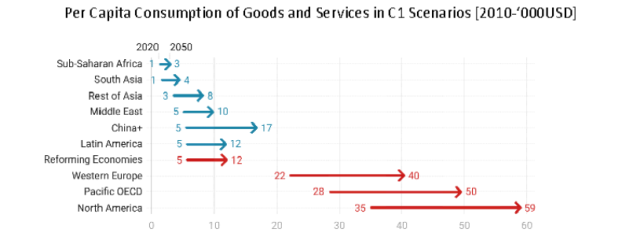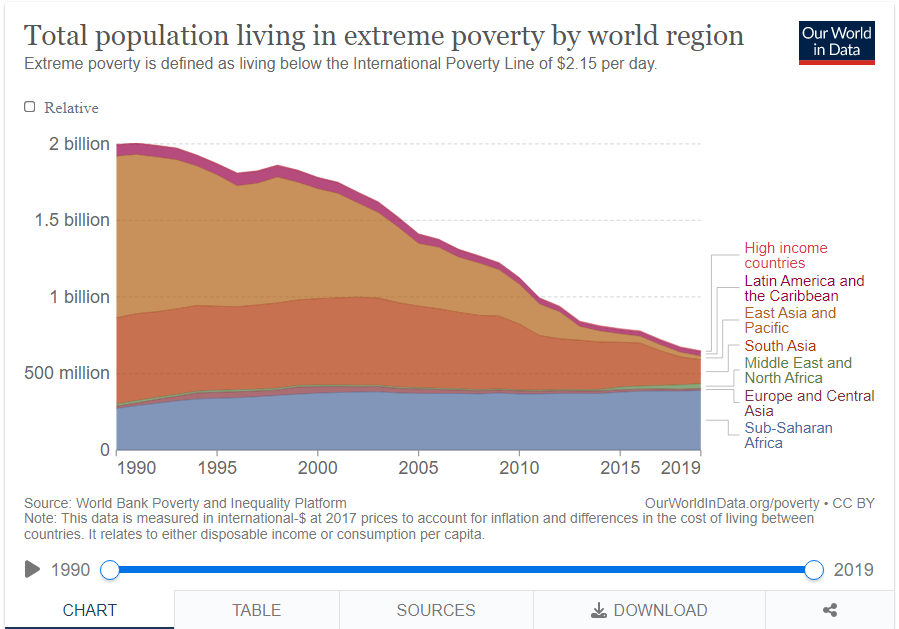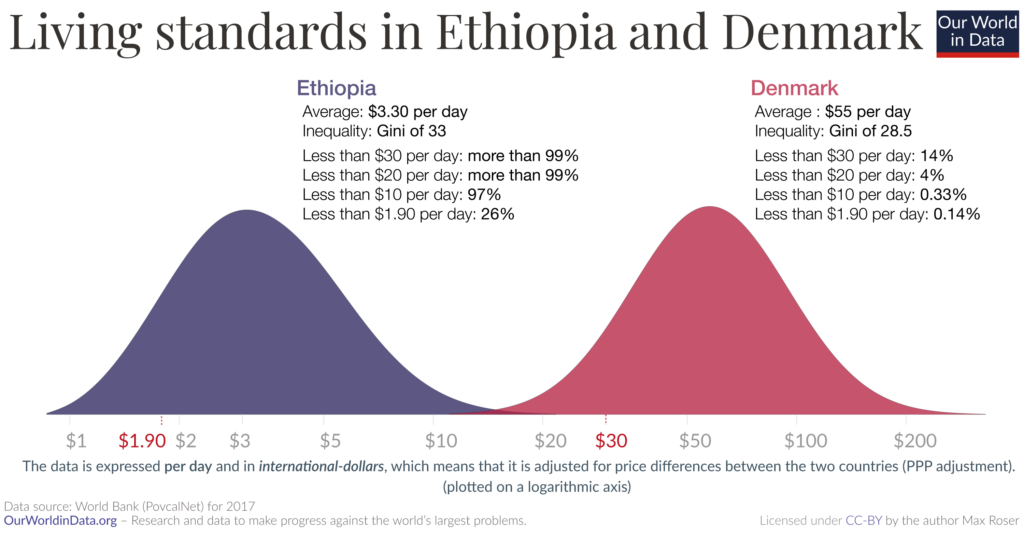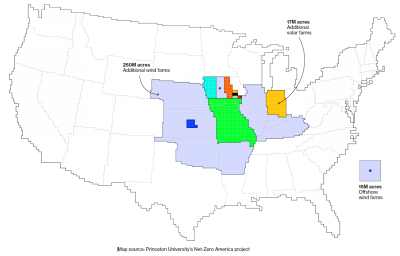We Can’t Have Climate Justice Without Ending Computational Colonialism


· 18 min read
It should be obvious that we can’t rely on policy elites to really pursue climate justice. There are gigantic and grotesque gaps between the climate rhetoric of rich nations and their real priorities. Current climate approaches led by rich nations are predicated on maintaining outrageous and unjustifiable levels of global inequality. Mere talk of climate justice, however fancily dressed up, makes no sense without an equitable global distribution of resources. Doing justice requires a moral imagination that dramatically de-centers greed to focus on those in greatest need.
Consider the scandalous and “remarkably uniform lack of equity” revealed by an analysis of 556 global climate policy models judged to be policy-relevant by the United Nations Intergovernmental Panel on Climate Change (IPCC). These complex calculations seek to map out the likely effects of proposed climate policies. But as energy policy researcher Tejal Kanitkar and colleagues report, the models collectively “project existing global inequities far into the future.” And in these mathematically imagined policy pathways, “the burden of climate change mitigation is placed squarely on developing countries.” Here’s an illustrative plot, showing projected “consumption of goods and services” by region (don’t worry about scenario details; they’re secondary for our focus).

These models imagine a future in 2050 where no developing region has even caught up to today’s rich-nation living standards, and sub-Saharans merit just 4.6 percent of the consumption per capita of North Americans ($2,700 vs. $58,600). That’s three decades in which 14 times more resources per capita are used to add to rich-nation comforts than go to mitigating severe sub-Saharan poverty. All model metrics have similar diabolically disproportionate resource-hog skews (e.g., a North American in 2050 gets 8 times the energy of a sub-Saharan).
Is that what you imagined “climate justice” to mean? Perhaps, like many who use the phrase, you haven’t thought much about it in tangible resource terms. To judge by the pernicious priorities lurking in their models, the most influential rich-nation climate nerds haven’t either—they simply assume wealthy countries will (and are entitled to) continue to purloin the lion’s share of the biosphere’s bounty. But as we’ll see, real justice means the rich taking much less of the global pie. That’s the litmus test of whether a climate policy pursues real justice, or is just “recreational righteousness,” a cheap way for elites to feel good about the privileges afforded by their ill-gotten gains in an ugly unjust mess.
The IPCC, and similar bodies, constantly call for “a focus on equity,” but, as Kanitkar’s team writes, “when it comes to operationalizing” such calls, the IPCC “falls woefully short.” An “alternative, equity-based framework for modeling” is vital, and “an equitable world must be central to [the] imagination” of global policymakers. We can’t continue to rely on the policy-elite’s current equity-shirking shambles (those 556 models were 94 percent rich-nation built).
For decades, policy elites have flaunted phrases like “climate justice” in speeches, reports, and the media. But this has turned out to be an elaborate charade. They’ve erected a math-fortified facade, concealing what I call “computational colonialism,” where the mindset, values, and priorities of policy elites (as encoded into economic models) actively perpetuate resource distribution patterns that are direct legacies of colonialism. Even do-gooders and sincere justice-seekers can be complicit simply by using (or deferring to) off-the-shelf economics. Any approach to climate justice that doesn’t account for the huge role of historical looting in structuring today’s world in effect imposes an “implicit imperialism.” It naïvely takes current global power and wealth patterns to be in some sense “justified,” or neutral—but they’re utterly shaped by imperialism.
Few (especially among economists) are taught about the enormity of historic plunder that undergirds world wealth and power differentials today. For a quick insight, consider that in 1700, India’s share of the world economy was 27 percent (larger than all of Europe’s) while Britain’s was 3 percent. After 250 years of vicious imperial plunder, those positions had flipped, while enormous revenues and booty were ruthlessly extracted for British benefit. Economist Utsa Patnaik estimates the current value of that regally-blessed robbery conservatively at $45 trillion (15 times the size of Britain’s economy now). The precise figure can be contested, but the gist is corroborated by plenty of other evidence. During British rule (in addition to the “forgotten free-market genocides,” in which the highly-”civilized” Brits out-murdered the Nazis), Indians saw essentially no gains in per capita income, and extreme poverty rates doubled (income collapsed for long periods such that life expectancy plummeted to 22 years). Public intellectual and serving member of India’s parliament Shashi Tharoor, in Inglorious Empire: What the British Did to India, reports that between 1757 and 1900, British GDP per capita grew in real terms 347 percent, while India’s barely budged, increasing by a mere 14 percent.
These centuries of staggering suffering were no accident, nor an act of god. They were the intended and bragged-about result of Britain’s gentlemanly greed-driven policies. Here are a couple of quick illustrations from Tharoor’s book: a French ambassador to London wrote that “there are few kings in Europe richer than the directors of the English East India Company” (a private corporation with an army twice the size of the King’s, whose charter licensed it to “wage war” for trade). British Governor General Lord William Bentinck bragged that the “bones of the cotton-weavers were bleaching the plains of India.” The life-modes of rich nations today are built upon the seizure of imperial booty.
The current effects of that systematic injustice are staggering. A baby born today in Nigeria merits a life expectancy of 53, 28 years shorter than a British baby. Even worse, during that life, far fewer resources are devoted to meeting the Nigerian’s most basic needs, never mind their flourishing. Along with lifespan, we should always assess total “resource expectancy”—the material benefits that a given person can likely access across their lifetime. Using GDP per capita as a proxy for accessible benefits, average British babies get a lifetime resource expectancy 34 times greater than Nigerian ones. These dire disparities mean a Nigerian child faces 27 times higher risk of infant mortality, a 31 percent chance of being stunted by malnutrition, an 84 percent chance of suffering child labor, and a litany of other life-worsening burdens.
To see the full ethical picture more clearly, we should compare resource disparities across the entire globe. Data from the World Inequality Lab can be used to estimate[1] lifetime resource expectancy ratios of the global top 10 percent, top 5 percent and top 1 percent as around 660 times, 1,037 times, and 2,700 times greater than the average global bottom-10-percenters. Global 1-percenters get more in financial resources in 12 days than a bottom 10-percenter does over their entire lifetime.
At this point, some readers may be confused. Those who pay attention to global poverty will likely have seen charts celebrating great progress towards eliminating it, like the one one below (this has been misdescribed as “humanity’s greatest achievement”).

Fans of feel-good narratives about markets maximizing flourishing may be surprised to learn that 85 percent of humanity still lives below a rock-bottom rich-world poverty line of $30 per day. (See the Our World in Data chart below. But be careful: glancing at it can be misleading, and the non-linear axis makes it look far more symmetrical and fair than it really is). Half of humanity doesn’t reach one-fifth of rich-nation poverty levels.

The World Inequality Lab (WIL) data charted below shows how the global pie is sliced by income deciles. Our de facto revealed priorities are crystal clear: the top decile greedily gobbles up more than half the whole pie (52 percent), the poorest half share only 8.5 percent, and the bottom decile secures only the slimmest of slivers (0.1 percent).

It gets worse. In stark contrast to the impression the cheerleading market optimists offer, the rich-to-poor nation gap has actually always been growing. Here’s the relevant World Bank chart below.

What the elite-flattering plots of “progress” divert attention from is the following: The core reason that the global rich-poor gap keeps growing is that the bulk of growth also goes to the already have-mosts, as a thin-gruel “trickle down” delivers an unbelievably bad bottom-share (the implicit imperialism pattern that the IPCC models extrapolate). WIL data shows that the total global personal-income pie grew $37 trillion from 2009 to 2019. Of that, top-decilers took $8.7 trillion (24 percent) and bottom-decilers got $25 billion (0.07 percent). That’s not a typo. Global markets, as now set up, allocate those in greatest material need 345 times less than they bestow on those that have greatest material abundance already. The average bottom-deciler earns just $289 annually, or 79 cents per day (that’s just under 3 percent, or 1/38th, of a rich-nation poverty level). Their income grows on average $5 per year, and at that rate it will take 2,100 years to reach rich-nation poverty levels (of $10,950 a year, $30 per day).[2]
The moral of the story told by the data is stark: our elite-beloved regime of greed and markets shows no sign that it will ever mitigate resource injustices (those trend lines aren’t converging). But (and not accidentally) this greed-and-markets policy toolkit has wildly succeeded as a plot to further fatten the rich (aka the greedocracy). Cherry-picked cheery charts implying we’re doing a decent job offer false comfort (as they camouflage a continuing colossal crime).
As you weigh your own reactions to these enormous inequities, consider the results of a 2014 study that used data from 40 nations surveying people’s opinions on how much the rich should earn versus the poor, or what the “ideal” ratio of CEO/worker pay ought to be. First, U.S. respondents were very poor judges of actual existing inequalities: the real “pay ratio of CEOs to unskilled workers (354:1) far exceeded the estimated ratio (30:1) which in turn far exceeded the ideal ratio (7:1).” The reported ideal range ran from 2 times (Danes) to 20 times (Taiwanese). But even more significantly, the survey found that among respondents, a “desire [for] greater income equality” was consistent across education, socioeconomic status, and political affiliation. This is strong evidence that the gigantic global income inequality ratios noted above are undesirable and unjustifiably ghastly. They can’t be reconciled with anyone’s sense of justice (or at least anyone who isn’t guzzling greedocrat Kool-Aid).
Measurable public opinion aside, those often-touted claims that global markets are making remarkable and celebration-worthy progress in alleviating poverty are simply lies. In what sense is earning an extra $5 a year, or 1.3 cents per day, an actual “escape” from poverty? The global economy remains shaped by the implicit imperialism of the elite’s history-blind economic imagination. Zealots insist we ought to rely largely or solely on markets to “decide” how resources are allocated. But if they don’t also have concrete means to counter old injustices, they simply perpetuate those still-onerous historic harms, wittingly or not (as those IPCC climate models do). Sadly, this implicit imperialism is embedded in standard economic thinking where it actively obstructs decent handling of the twin crises of climate and global poverty.
The current “win-win” market arrangements are so elite-servingly skewed that the rich win $345 for every $1 the poor win. It’s a “deal” so bad that the global rich will rake in greedy gains from the hardships and sweatshop toil endured by the poor so that one day, we’re told, their 70th-generation descendants might hope to “escape” poverty (that is, if the global poor survive biblical floods and other climate disasters). Our current “elites must win the most” global political economy is a disgrace, a crime against humanity. Their neoliberalism operates as a nerdier form of imperialism.
The fact that many big-deal journalists in the rosy-eyed “capitalism’s-got-this” chorus pose as hard-headed strictly-by-the-numbers do-gooders is a fury-triggering tragicomic fiasco. Shouldn’t devoutly data-driven journalists critically X-ray every overlord-flattering narrative? Shouldn’t they have unmasked the morally shocking trends noted above? And yet: Bill Gates’ self-aggrandizing paeans to “stunning progress” on poverty are uncritically amplified by courtier pundits like Ezra Klein, Derek Thompson, Noah Smith, Dylan Matthews, Nicholas Kristof, and many others. Their stenography-as-journalism wants you to feel good that greedocrats are using markets to do the lord’s work—but theirs is the dark lord, and they celebrate ludicrously lopsided results that in reality are lipstick on a resource-misuse pig.
Doesn’t justice demand that we use more of “our” blessings to ensure our unluckier planet-mates are decently resourced? The top-heavy travesty of inequality is so toweringly bad that even a tiny global-solidarity tax on elites would enable the planet’s poorest to escape poverty faster. If, say, $50 per year could be redistributed to bottom-decilers, their incomes would grow 10 times faster. To spell that out, average top-decilers in 2019 earned $126,000, so $50 would be a rounding-error-worthy 0.04 percent tax. Their typical annual income gain[3] would go from $1,800 to $1,750 (so, one less fancy bottle of wine per year) and bottom-deciler incomes would grow more in that year than they would in a decade of today’s rich-greed-feeding mode of economic growth (just a 0.23 percent top-decile tax could double bottom-decile incomes).
Other global tax schemes have been proposed: WIL’s multi-millionaire wealth tax. Homi Karas of the Brookings Institute finds a 0.7 percent billionaire wealth tax (netting $95 billion) could entirely “eradicate extreme poverty” in short order (or 2,100 years faster than the greedocracy’s “win win” markets will).
Anyone reflexively resisting redistribution, or feeling they “deserve” their outsized global-pie share, should note that global inequality scholar Branko Milanovic estimates that 80 percent of individual income variation is due to between-country factors. Your income doesn’t simply reflect your “merit” or output; it’s utterly shaped by the rich-nation opportunities you enjoy. And again, those opportunity platforms are built on a litany of old-but-not-gone injustices (you know, all the genocide, slavery, colonialism, extraction, exploitation, ecocide…).

Recall the global income distribution curve below: 15 percent of humanity gets the good fortune of being on a rich-nation income distribution; 85 percent aren’t so lucky.

Did we do anything to “merit” that luck? We who now enjoy rich-nation infrastructures may have had no hand in sowing the seeds of any historic harm, but we nonetheless reap the fruits thereof. We can’t change the past, but surely we should act to stop extending the effects of history’s parade of horrors (which is what global markets do if their implicit imperialism and computational colonialism isn’t forcefully countered). Doing a vastly more decent job of sharing the global pie would be a piece of cake, if justice was really our priority.
Returning to the crisis of climate: Have you seen coverage of the elite-targeted consumption cuts advocated by the UNEP, or the World Inequality Lab? Or even the IPCC (in the parts of their reports primarily authored by actual scientists, not the implicit-imperialism wielding economists—on climate, big-cheese economists aren’t acting remotely like real scientists, as I’ve argued here and here)? Researchers from all three of those august bodies advocate quick, deep personal consumption and carbon cuts by global have-mosts (e.g., of the order of 90 percent by 2030 for a carbon “fair share,” example descriptions of how can be found here).
Consumption cuts are both plainly prudent, and, in any case, inevitable. Obviously, cuts would be best if rationally and justly targeted, rather than done in a mainly market-driven manner, which would further burden those who have least resources and power (again the opposite of climate justice).[4] The under-sung upside of cuts-oriented changes is they can be near instant (no politicking, no vetoes, no slow systemic build outs) and in-toto they can have a huge impact (e.g., each 1 percent cut in personal carbon from Americans in the global 1 percent is akin to taking 8 million cars off the roads, or nixing 17 coal plant units).
Now, if your mindset hasn’t made this seismic shift yet—if you don’t believe that emissions cuts are absolutely necessary—then you haven’t really faced up to the climate realities that are already arriving, let alone what’s coming (which global elite habits vastly and disproportionately worsen). Few even among experts have really crossed this climate Rubicon. You can identify which pundits have crossed over by whether they treat climate as a dire crisis or as a lifestyle curation exercise (imagining that price tweaks and tasteful choices are all that justice demands).
“Political realists” peddle pre-crisis sugar-coated recipes that deem limits on rich lifestyles to be off the table, effectively blocking the plain rationality of limiting consumption to levels compatible with a collectively thriving human population and biosphere. The ostrichism of the rich is abetted by media gatekeepers who filter out well-researched rational calls for exactly such cuts and limits.
As energy scientist Kevin Anderson notes, our climate discourse is framed mainly by rich-nation elites: “climate experts, professors, journalists, policy makers, and entrepreneurs [who] remain very high emitters themselves” dominate our deliberations. As I’ve explained before, Anderson warns of their “mitigation denial,” where the need for “deep cuts in emissions today is substituted with empty promises of low-carbon technologies tomorrow.” While fossil-fuel executives have lied to the public for decades, Andersen feels the climate “expert community” is now guilty of similar sins. Every time experts fail to express the hard truth that consumption cuts are the only prudent path to cut carbon fast enough, they actively mislead. We’re now hemmed in by what resource-hog elites deem to be politically “realistic.”
But this “realism” betrays old-world pre-climate-crisis thinking. That world is gone; its norms, values, political reflexes, and economic recipes now obstruct us from doing what’s right and rational—especially on climate justice (burdens should fall on elites, not on the poor as envisaged by IPCC models). We’re now in a world of radically different material and moral constraints. We can no longer ignore biosphere limits. Or that the biosphere’s bounty is largely, like carbon, a zero-sum game (the more the rich use, the less the poor can). Although it is complicated, one useful simplification is that we now know that carbon concretely connects all consumption above some “fair share” level to harms (injuries that unjustly fall most on the poor).
Nothing justifies media pundits and gatekeepers putting old-world political realism above the cuts that scientists are calling for.
Lamentably, rich-nation policy thinking builds on elite-fattening implicit imperialism which is smuggled in by their “let the market decide” policy toolkit. To illustrate the state of affairs of policy-elite thinking on the systemic or infrastructure side, consider the climate related provisions of President Biden’s Inflation Reduction Act (IRA). The legislation allocates $37 billion per year to the clean energy transition. That’s half of what America spends on cosmetics per year ($80 billion), and one-twentieth what we spend on new cars ($636 billion). Put another way, that $37 billion per year in per capita terms comes out to $9.34 per month: that’s less than the cost of a monthly Netflix subscription![5] Even if Biden’s plan, which assigns climate the same monetary value (and thus moral priority) as your binge-watching habits, works out fully, it won’t move the needle enough in this “decisive decade.” As energy-systems expert Jesse Jenkins notes, Biden’s plan meets only “two-thirds of … our climate goals.” We must tackle the rest by other means, like personal consumption cuts.
Even techno-optimist Ezra Klein thinks we can’t bank on Biden-style plans. Pondering the land use changes required for the scale up of solar and wind energy, Klein concludes: “I don’t think it’s plausible.” Here’s a map from Jenkins’ Net Zero America Report showing the quixotic scale—250 million acres of wind farms on a land area equivalent to 6 entire states. Clearly, we can’t put all our eggs in this basket-case (of elite tech-and-markets “repugnant optimism”).

For a good overview of ideas about addressing climate justice that aren’t constrained by an implicit-imperialism mindset, see this extract from Reconsidering Reparations by philosopher Olúfẹ́mi O. Táíwò, who argues that “redress should be modeled on the global anticolonial tradition of worldbuilding.”
Because it’s worth repeating, I will say it again: cuts are absolutely necessary. We either opt for an easy-to-bear elite austerity (initially self-directed rapid cuts by have-mosts), paired with rapid gains for have-leasts, or bitter and brutal resource battles will begin soon. For instance, the World Bank’s estimate of the number of people whose only means of climate mitigation will be migration ramps up from 2030 to reach 200 million by 2050 (and other estimates range up to a billion refugees). The Ecological Threat Register says “5.4 billion people” will face water stress by 2040. And techno-realist Professor Julian Allwood forecasts “one billion people living near the equator [will be] at risk of starvation.”
Even the richest lives will suffer in havoc at even a hint of those horrific scales. There is nothing sacred about rich lifestyles. To declare that it is off limits to slightly inconvenience the world’s have-mosts is a logical and moral mistake of monstrous magnitude. It’s old-world thinking. It puts luxuries above bolstering the basic security of, and buffering the suffering of, billions of the planet’s poorest people.

Can we abandon those least to blame for—and least well equipped to cope with—the accelerating encircling crises, forcing them to bear the worst costs? And all so that we in rich nations can go on over-consuming mindlessly? Would that be climate justice? Or, seen rightly with the eyes of the planet’s poor, is our rich-nation policy imagination an ugly abuse of power and assertion of imperial resource privilege?
These sorts of arguments are rarely aired. But do you now knowingly want to side with those who put greed above need? To practice a vile travesty of decency under which “justice” is possible for the poor only when the rich gain by it? Vast avoidable suffering hangs on rapidly raising and resolving these issues. We must act to concretely prioritize climate equity and general resource justice—that means inverting the me-first values and priorities of policy elites to become firmly bottom-focused. Until we’re putting hundreds of times more effort into mitigating resource shortfalls among those that have the least, we shouldn’t be blowing more of the biosphere’s bounty on bonkers overlord baubles.
[1] Personal calculations.
[2] Personal calculations based on WIL data.
[3] Personal calculations.
[4] Luckily, you don’t have to be an Olympic medalist in empathy to see that climate justice requires cuts aimed at elites (like the criminal who, when asked why he robbed banks, quipped, Well that’s where the money is—elites are where the carbon is, half is due to top-decilers).
[5] $37 billion divided by 330 million is about $112 per year, or $9.34 per month.
This article is also published in Current Affairs. Illuminem Voices is a democratic space presenting the thoughts and opinions of leading Sustainability & Energy writers, their opinions do not necessarily represent those of illuminem.
Steven W. Pearce

Adaptation · Mitigation
illuminem briefings

Mitigation · Climate Change
David Carlin

Climate Change · Mitigation
Euronews

Mitigation · Climate Change
The Washington Post

Mitigation · Climate Change
Inside Climate News

Climate Change · Mitigation